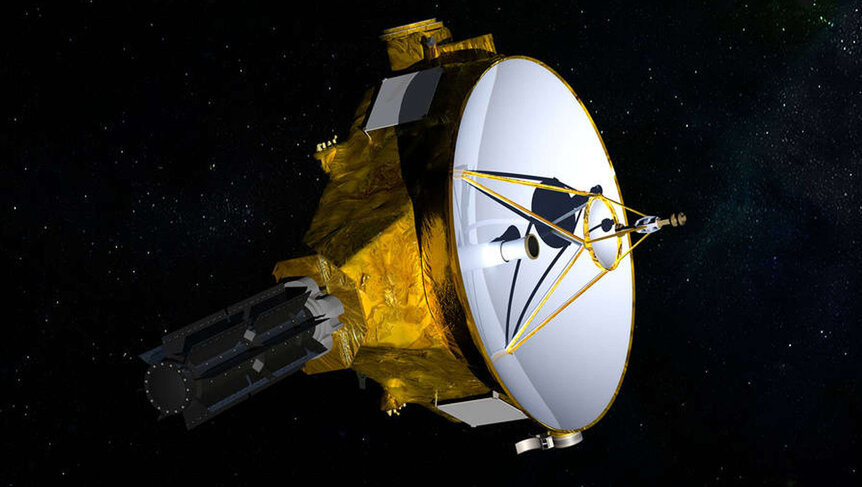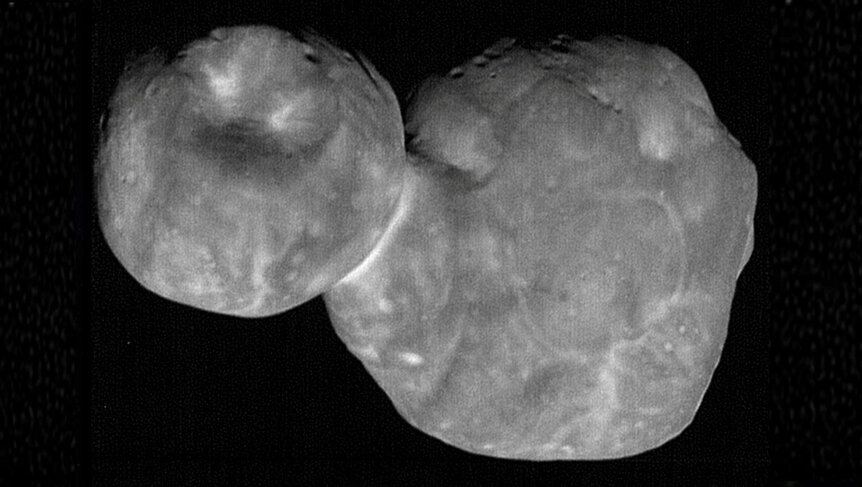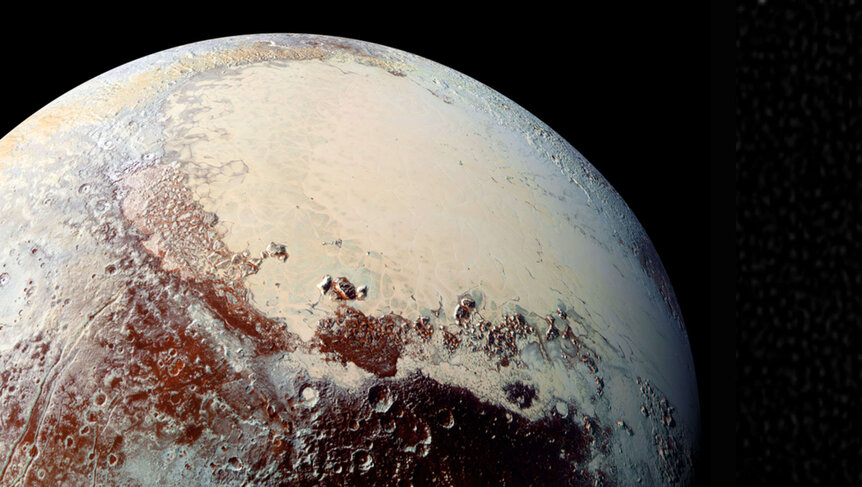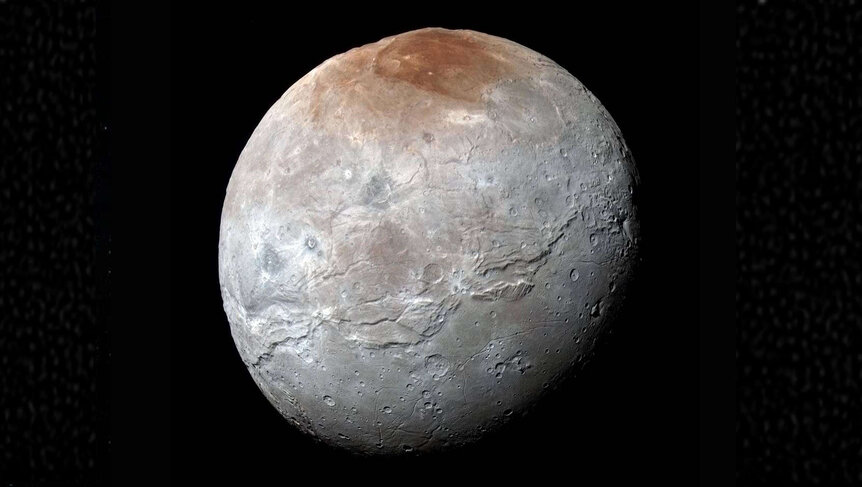Create a free profile to get unlimited access to exclusive videos, sweepstakes, and more!
Almost 4.7 billion miles from the Sun, there is more on the horizon for the New Horizons mission
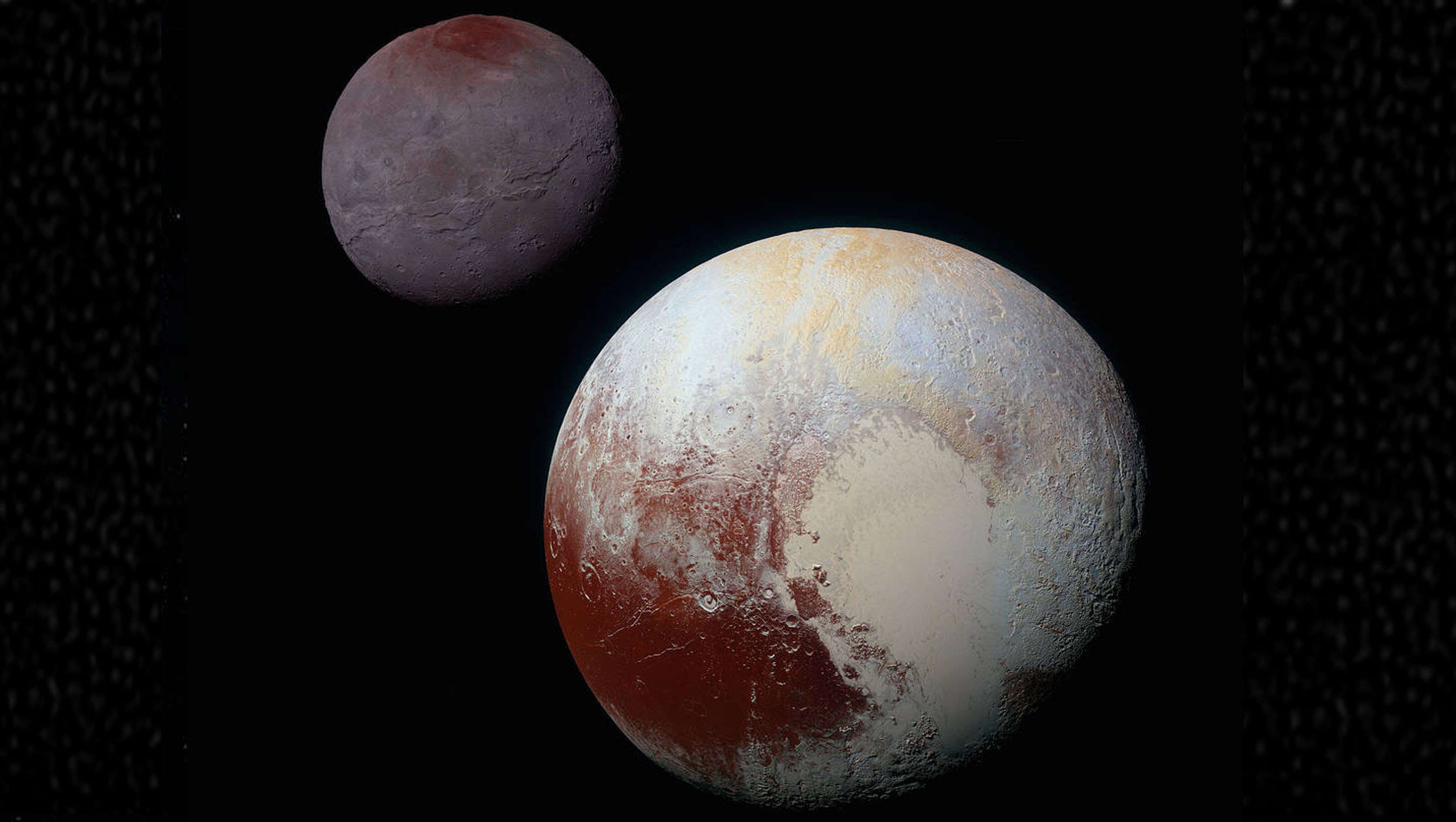
Alan Stern remembers the night he first glimpsed Arrokoth. The bizarre Kuiper belt object that would capture the curiosity of millions was still lurking somewhere unknown that June night in 2014, when the summer heat of Houston had cooled off everywhere but mission control.
It was 3 a.m., with coffee-fueled scientists eagerly waiting for New Horizons to beam something back to Earth. Stern nervously watched the interplanetary space probe, which had already been on a perilous journey to Pluto and beyond, navigate the edge of the solar system. The room buzzed with caffeine and anticipation. It was searching the far reaches of the solar system for Kuiper belt objects, which seemed to be eluding it until something materialized on the screen — a double-lobed rock that was like no extraterrestrial object he or anyone else had ever glimpsed before.
“We were like, what’s that?” Stern, the principal investigator for New Horizons and a planetary scientist at the Southwest Research Institute (SWRI), tells SYFY WIRE. “It was just unbelievable. This thing, it just comes out of the sky and turns out to be spectacular. I couldn’t have hoped for a bigger result than the Arrokoth flyby, and nobody really anticipated that.”
The object was identified as planetesimal 2014 MU69, later renamed Arrokoth after the Powhatan word for "sky." That encounter would go on to change how NASA would carry out planetesimal flybys. This past Saturday night, seven years later, New Horizons reached a rare milestone distance of 50 AU, or almost 4.7 billion miles from the Sun. What sets New Horizons apart from missions like Juno or Perseverance is that Pluto had mostly lived in the shadow of NASA missions starring better known planets like Jupiter and Mars. The mission was launched to explore the mysteries that this celestial body, which had (some think unfairly) been demoted from planetary status, might have been hiding.
The mission has not been without its risks since it launched in 2006. Unlike previous missions NASA had sent to the outer solar system, there was no Voyager 2 to back up the spacecraft in case something glitched. Stern and his team had to wait an excruciating nine years, closer to a decade, to see it finally reach Pluto without crashing and burning in the literal edge of nowhere.
“With New Horizons, we just didn’t have a budget to build two like the Voyagers,” Stern says. “So if anything had happened, that was going to be it, which was very much on my mind. We wanted it to succeed because we knew Pluto was going to be really interesting, but honestly, it far exceeded my expectations when we actually saw it up close. It’s just a wonderland scientifically.”
When New Horizons was being built, it was at the extremes of where technology could venture then. What haunted Stern was that it could end up like past missions from the ‘60s, ‘70s, and ‘80s, with information about uncharted regions of space being lost and leaving scientists with no other choice than to pick up whatever fragments of data they had left and put it back together with whatever images they had.
The science of what alien planets are actually like has proven to be even more fascinating than what fiction has dreamed up about them. Even scientific predictions landed nowhere near the wonders waiting to be found. Before missions as advanced as New Horizons were possible, no one expected rivers, or really any sign of water, on the radiation-bombed wastelands of Mars. No one could have made Mercury out to be an exposed iron core of a primordial planet, or Jupiter to have moons erupting with cryovolcanoes, something that Pluto would echo. The not-quite-a-planet revealed a fantastical landscape of mountains, craters, cryovolcanic floods, and jagged peaks of ice that slash like knives into the dark expanse above.
“We’re the first mission of the 21st century to go off to another planet,” Stern says. “With all the perspective from previous missions, upgraded technology did a lot, and our predictions were confirmed. We were reacting because it was so spectacular. We’d been trying to piece together the whole story from the data we had, and while we get an A for execution, for that perfect flyby, we get an F for scientific predictability."
What Stern and his team unearthed about Pluto almost played out like a sci-fi movie. It deceptively appears like a dead orb of ice. Satellites and probes that have gotten up close to other objects in the solar system had previously revealed that the smaller the object, the fewer geological features, but this obviously did not apply to Pluto. It was more geologically complex than the New Horizons team could have ever imagined. Many vast formations on its surface were hardly born yesterday — at least in cosmological terms, when that yesterday is millions of years.
Planetary scientist Cathy Olkin, co-principal investigator for New Horizons’ Ralph instrument, was just as surprised. Ralph is a color camera and near-infrared imaging spectrometer duo that was able to image Pluto in unprecedented detail.
“We knew that it would provide detailed images of the surface of Pluto and its satellites that weren’t possible from Earth,” Olkin tells SYFY WIRE. “As such, we expected that these data would transform our understanding of the Pluto system. But I didn’t realize the complexity and active processes that we would be able to see as a result of the Ralph data. The encounter with Pluto exceeded my exceptions and astounded me.”
Not only was Pluto assumed to be as geologically dead as it looked, but whatever powers its geologic forces somehow continues to run in isolation. Most small bodies, such as moons, are powered by tidal forces between them and the massive planets they orbit. Though Stern expected that any slight sign of geological activity would be a breakthrough, neither he nor his colleagues were ready for the huge and surprisingly young cryovolcanoes they were viewing on their screens through the robotic eye of New Horizons.
“Pluto just broke the mold,” he says. “The cryovolcanoes just blew us away. It really rewrote everything we thought we knew, and we’re still not sure how Pluto’s geologic engine continues to do that and has not run out of steam.”
For Olkin, one of the most surprising features that New Horizons saw on Pluto was an enormous glacier, and the Ralph instrument used infrared spectroscopy to tell scientists back at mission control that the glacier was gushing with frozen nitrogen, methane, and carbon monoxide.
“It was surprising to see active geologic processes, like evidence of convection in the glacial ices and the flow of ices from terrain from a higher elevation to a lower elevation,” she said.
Just like plumes of water vapor from the moons Enceladus and Europa suggest there are deep waters far beneath their glacial crusts, volcanic activity on Pluto could mean a subsurface ocean. After the Pluto flyby, Stern realized that the impact crater Sputnik Planitia gave away potential evidence for an ocean beneath miles of ice and rock that would protect any hypothetical life from the hazards of space. Pluto is too far away from the Sun to be hit by the cosmic rays, solar storms, and coronal mass ejections that continue to torture Mars, but it could still unexpectedly run into rogue objects or even colder molecular clouds as it orbits the Sun.
Because Pluto has a tidal equilibrium, its entire shell moves with that equilibrium, which is probably reached from a global interior ocean. Though only a probe could prove that Pluto really is a bizarre ocean world possibly teeming with life, observations of Sputnik Planitia made it much more likely, and the organics oozing from its cryovolcanic floods at the surface could be further evidence of that.
“Because of Sputnik, there is a very strong circumstantial argument that there’s an ocean inside Pluto,” Stern says. “It’s a very long shot that we just made it up by random chance.”
The moons of Pluto were even more alien to those of us on Earth than the object they orbited. Going into New Horizons, all Stern and his team really knew about them was their relative brightness and spectra, but nothing about their geologies or formations. They were also aware that the largest moon, Charon, had a surface made mostly of water ice. Though Charon is nowhere near Pluto geologically, it is still far more active than anyone on the mission expected. Volatiles that escaped Pluto’s atmosphere continue to accrete in the cold traps that are its unusually dark polar ice caps.
New Horizons’ plasma sensors picked up on the escape rate of gases in Pluto’s atmosphere, which was a thousand times lower than predicted. Its atmosphere was also expected to be more like a comet’s, but it surprisingly turned out to be more Earthlike than anything. What is going into Charon and morphing into black ice could almost have come from our own planet.
“With Charon, you often hear scientists say, ‘We ruined the textbook with this mission’,” Stern explains. “We really wrote the textbook from scratch. We didn’t know anything about Charon, but it turns out Charon is a spectacularly interesting world. There’s also something sci-fi about its ice caps, where gases from Pluto’s atmosphere get processed into dark materials.”
Hydra is a Plutonian moon that could tell us more about Earth’s past. Stern believes it is the closest analogy to the formation of Earth when our planet was just a protoplanet that was still undergoing cosmic collisions and accreting more material in the chaos that once was our solar system. Satellites like Hydra are leftovers from the formation of larger rocky planets and moons (and whatever you want to call Pluto).
New Horizons found that the stuff of Charon created all of Pluto’s moons, since they all formed in the same protoplanetary disc with objects flying everywhere as if they were flung about in a cosmic pinball machine. New Horizons’ LORRI and NVIC cameras worked in tandem to see how some of Pluto’s impressive mountain ranges formed. Some were the aftermath of impacts that left behind craters such as Sputnik Planitia. Others could have formed tectonically, which might explain the cryovolcanoes that explode in exotic ices. There are still other formations that have yet to be understood.
Yet another object that Stern believes could send us back to the nascent solar system is Arrokoth. After years of controversy over which models and theories were the most viable for explaining how planets formed when the universe was still young and hot and bothered, this object that appeared out of nowhere probably has the answer.
“Arrokoth is a planetesimal; it could tell us how planetesimals form,” he says. “It presents evidence that such objects can form without collisions, and that can happen with binary accretion. It’s widely accepted that Arrokoth more or less settled the matter. It showed stability in what is known as a collapse model, which rules out other models of planetary formation, and that was a huge thing for New Horizons — it was something we didn't anticipate.”
Finding this out would not have been possible without the Ralph instrument, which observed the primitive object to understand its origin and formation.
“From the Ralph data, we know that the two lobes have similar colors and surface compositions,” Olkin notes. “This helps us to understand how Arrokoth formed — likely from a slow merger from two objects that formed in the same environment, hence the similar color and composition. I would love [to] have New Horizons fly near another object in the outer reaches of our solar system to learn even more about this enigmatic region of space."
Stern is also optimistic about flying by another mysterious object from the Kuiper belt, so long as New Horizons does not burn all its fuel trying to find one. The Kuiper belt is a heterogeneous mashup of objects. From dust particles to hulking asteroids and planetesimals like Arrokoth, they initially formed in different populations, which are from all over the solar system. Some may have even been hurled there from interstellar space.
For now, New Horizons is on the lookout to find an object from a different population than Arrokoth, and that object may have something more to tell those of us back on Earth about events that could only be written in the strange language of space rocks.
“This is a mission of pure discovery,” Stern says. “We didn’t know enough about Pluto to have many scientific questions, and even now that we know more, things still keep surprising us. Maybe we will have another Arrokoth moment.”
